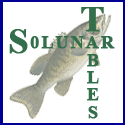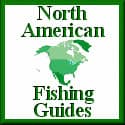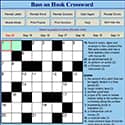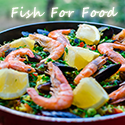Bass on Hook is Supported by our readers. As an Amazon Associate We earn commissions from qualifying purchases. For more informtion read our Amazon Affiliate Disclosure and Affiliate Disclosure Policies.
Feeding Behavior Of A Bass
By Leo Watson
The bass has one major weakness ---- it's never ending quest for food.
Its appetite is one reason anglers pursue this highly popular gamefish.
A bass grows fast and large due in part to its foraging habits.
This habit makes it susceptible to anglers like us.
While a baby bass's mouth is developed during the first few hours after it emerges tail first from the egg, the yolk sack (little sac filled with protein and attached to its belly)sustains it.
About the second or third day of its life the yolk sack has been absorbed and the fingerling is ready for the world.
The size of the prey consumed by the bass increases as the fish grows, though the relative size decreases.
The types of forage also changes.
A transition in food habit occurs.
The principal food for bass less than 2 inches long is plankton and tiny crustaceans (zooplankton and water fleas).
These small bass seem to feed endlessly.
After 4 to 6 weeks, aquatic and terrestrial insects, (nymph and larvae forms) become the bass's diet until it reaches about four inches in length.
At about 10 weeks old, the diet of the fingerling bass consists mostly of tiny forage fish as well as small crayfish and grass shrimp.
Within six months they have at usually attained a length of 6 or 7 inches and are eating anything they can get into their mouth including smaller bass.
When they reach about a pound in size forage fish, frogs and crayfish have become a substantial part of their diet.
When a bass reaches 2 to 5 pounds, it has matured into a very efficient predator.
Besides smaller forage fish, the bass's diet may consist of ducklings, water snakes, field mice, baby alligators, birds or small insects that fall into the water.
I have seen some large bass tackle very big forage fish.
A largemouth can supposedly swallow a slab sided bluegill that is about one third its own length.
I have seen bedding bass inhale bluegills of incredible sizes as compared to the bass.
Keeping this in mind when you get to the tackle box could pay big dividends.
Digestive rates vary with several factors that are keyed to the bass's metabolism.
Bass will and do strike baits even with a full stomach.
Many of us have caught bass that were spitting up food and yet still attacked our offering.
Pay close attention to what types of forage they are spitting up.
This can be very crucial for lure selection.
How A Bass's Metabolism Affects Its Feeding Behaviour
Water temperature affects the metabolism of the cold blooded bass.
As winter sets in, dropping water temperatures into the 40's, the bass's metabolic rate and its digestive rate slow down.
Food requirements also slow as the water cools.
Bass feed as infrequently as once every two weeks in extremely cold water.
It takes about two days for a bass to completely digest most forage during warm weather and a lot longer in cold temperatures.
You will commonly find three types of feeding behavior in bass.
They are:
methodical inhalation
competitive inspiration
and reflex reaction
The first two are hunger driven, while the last is simply a response to the newly found prey.
Bass always compete with each other for available forage.
This is especially true during years of low forage due to poor spawning.
For the bass, less forage fish means survival of the fittest.
These bass have very little thought for safety when they are on a feeding binge.
This competition will work in the anglers favor.
If you catch one bass chances are given these circumstances that you can catch more from the same spot.
A bass's sex also plays a part in its feeding habits.
The larger female feeds more actively than the males.
But there are times when male bass are more susceptible to capture, especially during the spawn when they are guarding the nest, even though they seldom feed during this part of the spawn.
I have experienced this first hand.
In 1999, while fishing with one of my sponsors (who is a very good angler in his own right) I caught 11 bass off of spawning beds in 11 consecutive casts.
All of these bass were males and all were protecting their recently hatched fry.
While all 11 were fairly easy to catch you still had to make a very accurate cast right in front of their nose to get this reaction strike.
I will cover this more in depth in later articles.
To Summarize A Bass's Feeding Behaviour
In closing this article the information contained within will help you better understand the bass.
With your ever growing knowledge of the senses and feeding behavior of the bass you will put more bass in your boat.
Never stop learning about bass, the more knowledge you have the more accurate your instincts become.
As always if you have any questions please do not hesitate to ask me through this web site.
Keep checking back on this site for my next article.
Good luck,
Leo Watson
Pro Staff
Look for other articles written by Leo Watson in Leo's Pro Staff Angler Profile










